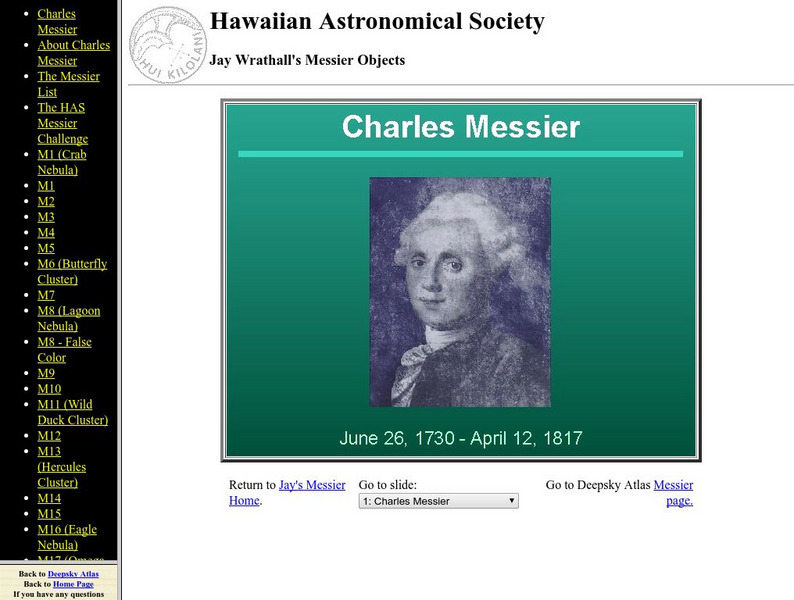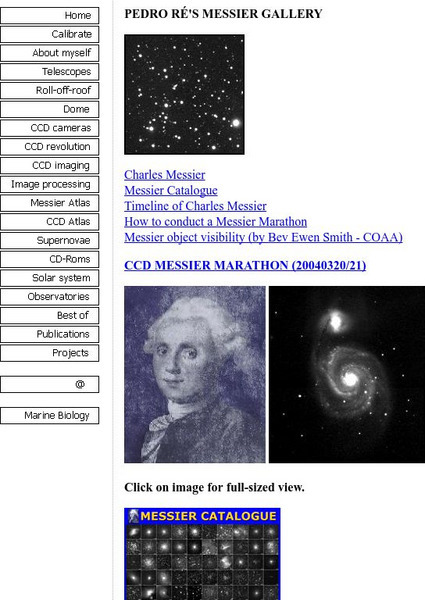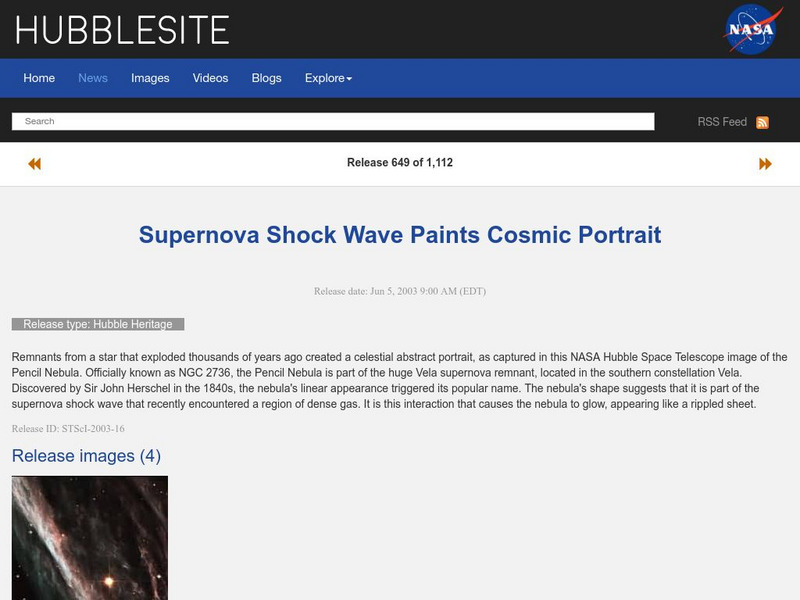Hi, what do you want to do?
NASA
Nasa: Image Science Center: Ask the Space Scientist
A NASA space scientist provides 98 questions and answers about the sun, the center of our solar system.
Other
Has: Charles Messier
Brief, concise facts about Charles Messier and his catalog of comets, galaxies, and other astronomical bodies. Included are photographs of each of the 110 objects listed in his catalog.
American Association of Physics Teachers
Com Padre Digital Library: Open Source Physics: Local Coordinates Model
This astronomy simulation presents stars in their Altitude/Azimuth coordinates serving as an introduction to the celestial globe and equatorial coordinates.
Other
Hong Kong Space Museum
Besides an introduction to exhibitions and events at the museum, the site provides a guide to stargazing, an astronomy FAQ, space news, virtual tours (see site map) and research resources (including Chinese-English star and constellation...
Wikimedia
Wikipedia: The Black Hole
This site examines the black hole as an object in astrophysics. Delve into this comprehensive resource that covers this concept from its history, to qualitative physics, the reality of black holes, mathematical physics and more.
E-learning for Kids
E Learning for Kids: Science: Antarctica/ What Are the Different Parts of the Universe?
In this lesson, students learn about objects in the universe, including constellations, planets, meteors, asteroids, and comets.
National Endowment for the Humanities
Neh: Edsit Ement: Galileo: Revealing the Universe
For this lesson plan, students will consider "Galileo: Revealing the Universe." The plan includes worksheets and other student materials that can be found under the resource tab.
Other
Pedro Re's Messier Gallery
Are you looking for information on Charles Messier? This site includes a detailed biography of his life along with a timeline, how to conduct a Messier Marathon, and photographs of the astronomical objects in Messier's catalog.
Space Telescope Science Institute
Hubble Site: Supernova Shock Wave
This site from the Hubblesite highlights an article written about a supernova shock wave. Provides images as well as video footage. Site offers links to fast facts, a question and answer section as well as related links.
Other
Paper Plate Education: Serving the Universe on a Paper Plate
Excellent resource for "paper-plate" activities that help simplify various astronomy topics. Learn how to build a "Moon Finder" and "Planet Pointer," and create a paper-plate model that explains the Transit of Venus.
Science Buddies
Science Buddies: Using a Digital Camera to Measure Skyglow
This is a great project for someone that is interested in both stargazing and photography. Bright city lights and even the light of the full moon obscure the dimmest stars, which can make identifying constellations more difficult. This...
Curated OER
Aries the Ram
The Learning Network surveys several constellations and the twelve constellations that comprise the Zodiac. Features include star tables and symbols.
Curated OER
Taurus the Bull
The Learning Network surveys several constellations and the twelve constellations that comprise the Zodiac. Features include star tables and symbols.
Curated OER
Gemini the Twins
The Learning Network surveys several constellations and the twelve constellations that comprise the Zodiac. Features include star tables and symbols.
Curated OER
Cancer the Crab
The Learning Network surveys several constellations and the twelve constellations that comprise the Zodiac. Features include star tables and symbols.
Curated OER
Leo the Lion
The Learning Network surveys several constellations and the twelve constellations that comprise the Zodiac. Features include star tables and symbols.
Curated OER
Virgo the Virgin
The Learning Network surveys several constellations and the twelve constellations that comprise the Zodiac. Features include star tables and symbols.
Curated OER
Scorpio the Scorpion
The Learning Network surveys several constellations and the twelve constellations that comprise the Zodiac. Features include star tables and symbols.
Curated OER
Sagittarius the Archer
The Learning Network surveys several constellations and the twelve constellations that comprise the Zodiac. Features include star tables and symbols.
Curated OER
Capricorn the Goat
The Learning Network surveys several constellations and the twelve constellations that comprise the Zodiac. Features include star tables and symbols.
Curated OER
Aquarius the Water Bearer
The Learning Network surveys several constellations and the twelve constellations that comprise the Zodiac. Features include star tables and symbols.
Curated OER
Pisces the Fishes
The Learning Network surveys several constellations and the twelve constellations that comprise the Zodiac. Features include star tables and symbols.














